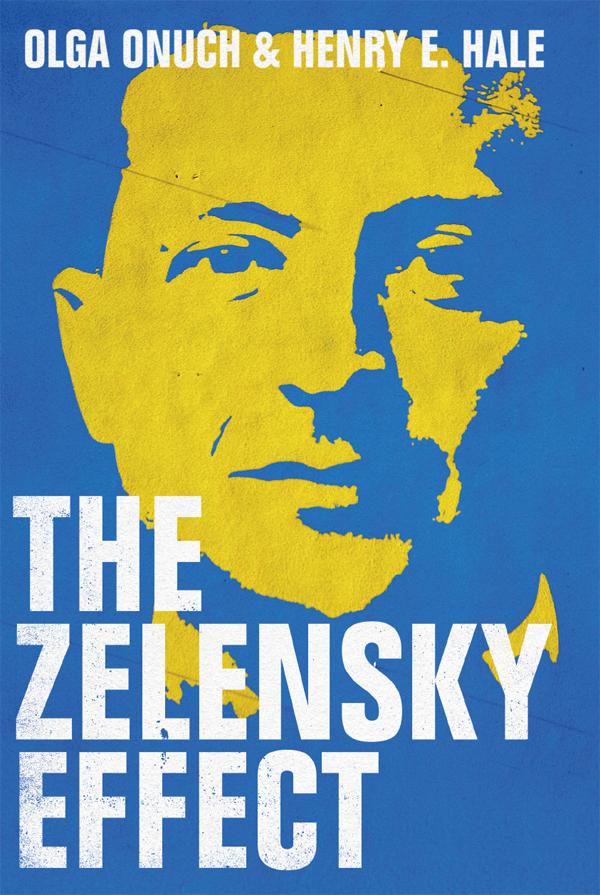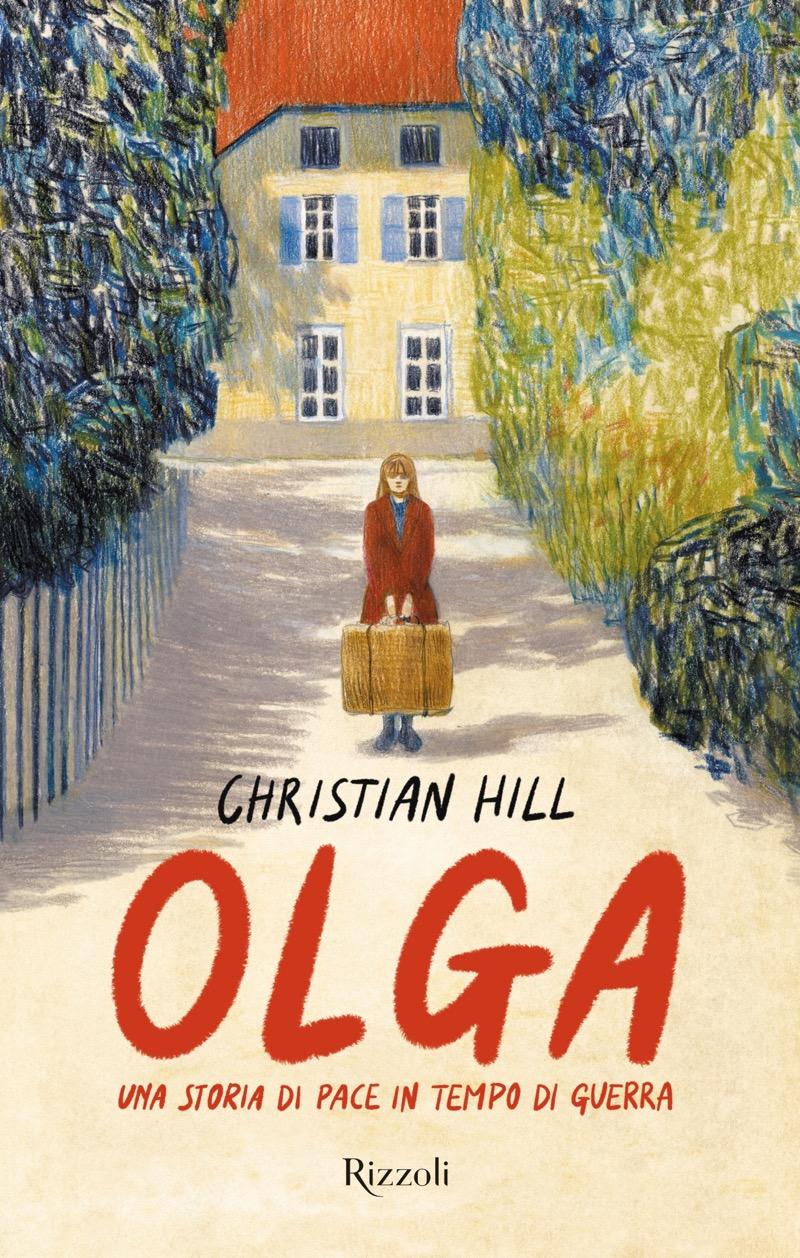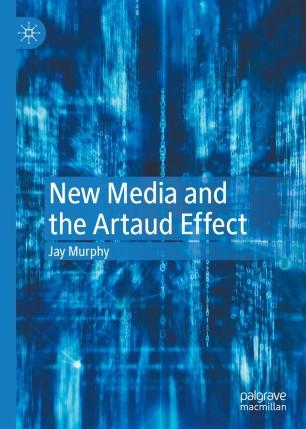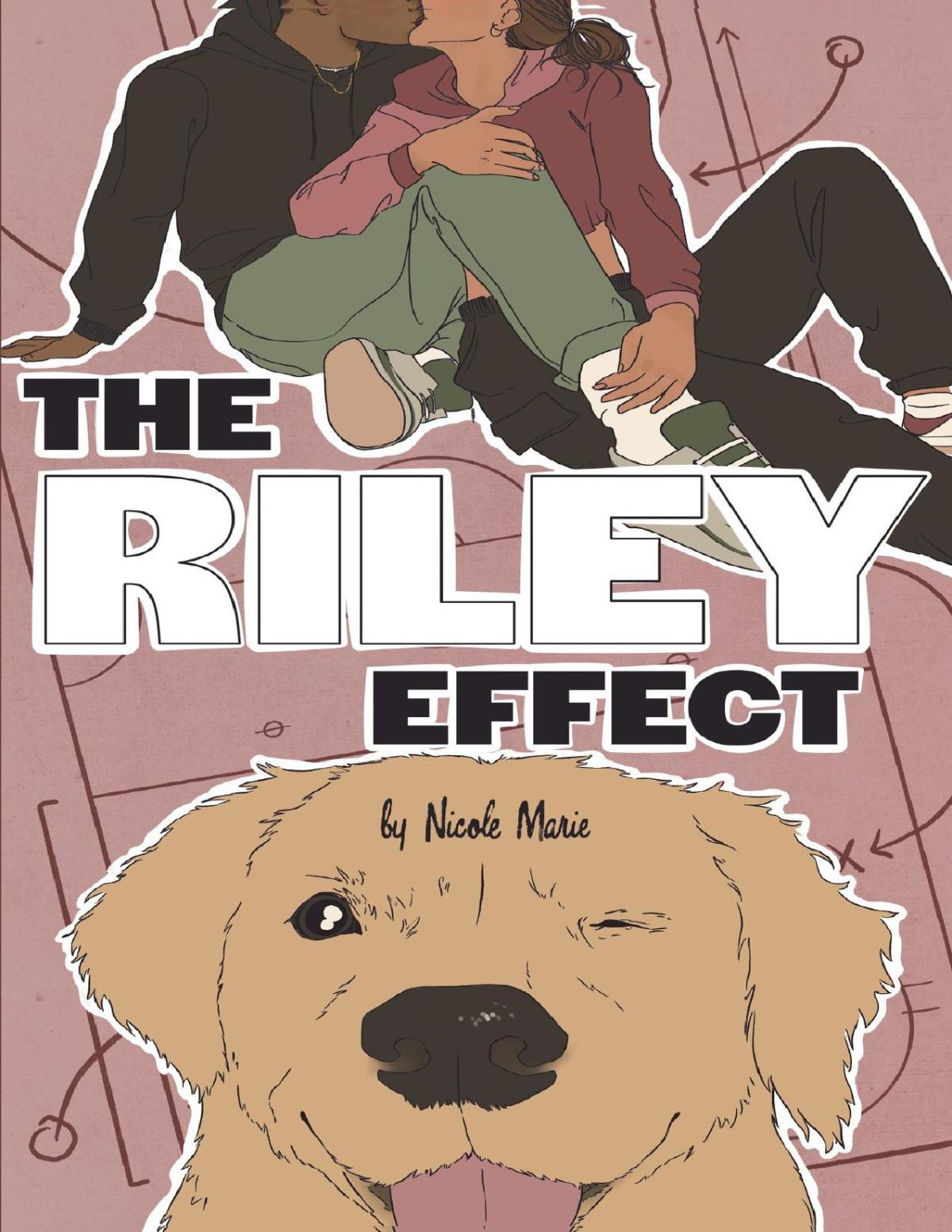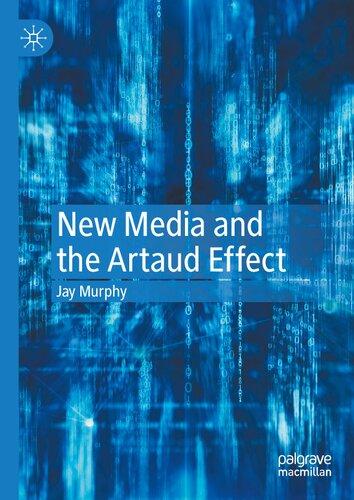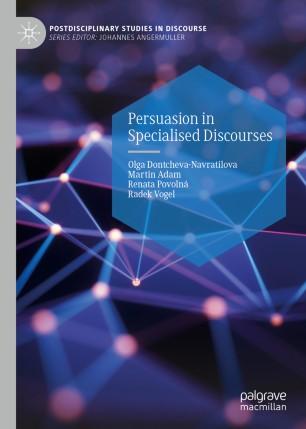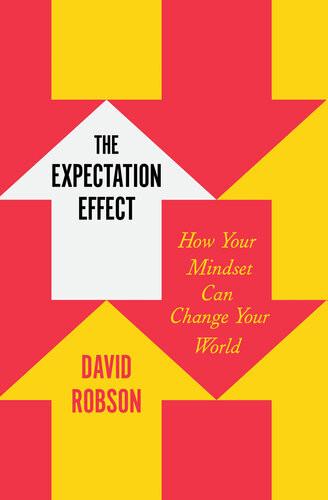OLGA ONUCH
HENRY E. HALE
The Zelensky Effect
Oxford University Press is a department of the University of Oxford. It furthers the University’s objective of excellence in research, scholarship, and education by publishing worldwide.
Oxford New York
Auckland Cape Town Dar es Salaam Hong Kong Karachi
Kuala Lumpur Madrid Melbourne Mexico City Nairobi
New Delhi Shanghai Taipei Toronto
With offices in
Argentina Austria Brazil Chile Czech Republic France Greece
Guatemala Hungary Italy Japan Poland Portugal Singapore
South Korea Switzerland Thailand Turkey Ukraine Vietnam
Oxford is a registered trade mark of Oxford University Press in the UK and certain other countries.
Published in the United States of America by Oxford University Press 198 Madison Avenue, New York, NY 10016
Copyright © Olga Onuch and Henry E. Hale 2023
All rights reserved. No part of this publication may be reproduced, stored in a retrieval system, or transmitted, in any form or by any means, without the prior permission in writing of Oxford University Press,
or as expressly permitted by law, by license, or under terms agreed with the appropriate reproduction rights organization. Inquiries concerning reproduction outside the scope of the above should be sent to the Rights Department, Oxford University Press, at the address above.
You must not circulate this work in any other form and you must impose this same condition on any acquirer.
Library of Congress Cataloging-in-Publication Data is available Olga Onuch and Henry E. Hale. The Zelensky Effect.
ISBN: 9780197684511
CONTENTS
Acknowledgments
NoteonTransliteration
1. Global Hero
2. The Independence Generation
3. Orange is the New Corruption
4. The Art of Politics
5. The Virtual Incumbent
6. President “Ze!”
7. The Zelensky Effect at War
8. Ukraine’s Future History
Appendix of Figures
Notes
Index
ACKNOWLEDGMENTS
It has long been a cliché to say that writing a book requires the backing of a whole village, and by now it is even clichéd to observe that this particular cliché happens to be true. Far be it from us to let the village go un-thanked just because it has become clichéd. In our case, the “village” includes not only individuals but a robust set of scholarly networks, institutions, and, most importantly, a country. The country is, of course, Ukraine. We thank all ordinary Ukrainians for inspiring our research for decades. Your strong sense of civic duty and identity, as well as your constant willingness to mobilize en masse when your lives and futures are at stake, lie at the heart of the nation that gave birth to and nurtured the man at the center of our story, Volodymyr Zelensky. But while our book bears his name, it is more fundamentally about his country, about the people who made the man and co-produced the leadership that he has shown in the dark days since February 2022, when Russia launched its full-scale invasion. This means allUkrainians. You have fought for Ukrainian democracy and sovereignty for decades and you continue that fight today. And to those Ukrainians currently living under occupation, your resilience and sense of civic duty are aweinspiring—Kherson is Ukraine, Donetsk is Ukraine, Luhansk is Ukraine, Zaporizhzhya is Ukraine, and Crimea is Ukraine!
Among the individuals in our village, we would first single out our families: Miles, Mirka, Yuri, Isabelle, and, yes, even Yara, Blanche,
and Stella. All put up with burdens neither of us had intended to impose on them during the writing of this book. Without their unconditional love and understanding, as well as the insights they have shared as we discussed our project in progress with them, there would be no book. Many dear friends have also listened to us ramble on about our research, and the fascinating (to us, at least!) conversations that followed have often given us pause and helped us improve our analysis. We mention in particular Olesya, Taras, Irka, Marta, Yuliya, and Sasha. With our own friends and, in Olga’s case, family in harm’s way, we also give special thanks to others who provided support through some of the hardest periods of 2022, including Carol, Sorana, Laurence, Jen, Katie, Anna, Maria, Miriam, Evrim, Jane, Orest, Vitalik, and Zsofi—they all know how they helped and we thank them.
On the professional side, we would begin by thanking Irina, Katya, and Anna for their outstanding research assistance. To our dear colleagues who discussed the book with us, read related papers, provided feedback on associated presentations, checked our analyses, provided us useful leads or other information, and/or have been understanding when we have been distracted from other joint projects, we are extremely grateful. While not all may agree with everything we have argued, we would name here Volodymyr Kulyk, Gwendolyn Sasse, David Doyle, Mark Beissinger, Graeme Robertson, Grigore Pop-Eleches, Bryn Rosenfeld, Jane Green, Javier PérezSandoval, Tymofiy Brik, Irina Soboleva, Tanya Lokot, Emily ChannellJustice, Tamara Martsenyuk, Erik Wibbels, Ernesto Calvo, Joshua Tucker, Lucan Way, Samuel Green, Tomila Lankina, Oxana Shevel, Maria Popova, Emma Mateo, Nadiya Kravets, and Timothy Colton. We also express our gratitude to the numerous insiders and other interlocutors who have shared their insights about Ukraine with us this year and long before—without them we would not know much that we do today.
Certain scholarly networks and projects have also been invaluable forums for the development of our ideas. Immensely important has been the MOBILISE project “family,” including country principal
investigators and co-investigators David Doyle, Evelyn Ersanilli, Gwendolyn Sasse, Sorana Toma, and Jacquelien Van Stekelenburg, as well as postdoctoral researchers Javier Pérez-Sandoval, Anna Glew, Felipe Gonzalez-Santos, Sébastien Michiels, and Piotr Goldstein, and PhD students and PhD research assistants Astrid Bodini, Kostyantyn Fedorenko, Emma Mateo, Ana Martinez, Alex Josid, Alina Nychyk, Cressida Arkwright, and Kateryna Marina. Exchanges through PONARS Eurasia have also been especially important, with special thanks going to all who participated in its March 2022 round-the-clock Ukrainathon, which featured an early presentation of our Zelensky Effect idea and generated crucially important feedback. Special mention also goes out to our coinvestigators in two projects from which we draw data, the Identities and Borders in Flux (IBIF) Ukraine project (Kulyk and Sasse) and the Ukrainian Crisis Elections Panel Survey (UCEPS) project (Colton and Kravets).
Funding that contributed directly to this book has come from many sources, including: the Open Research Area, which funded the MOBILISE project (www.mobiliseproject.com) with Grant Ref ESRC ES/S015213/1; the British Academy, which funded the IBiF Ukraine Project with grant IC4/100280; the U.S. National Science Foundation, which funded the UCEPS project under grant SES1445194; the George Washington University, through PONARS Eurasia and the Petrach Program on Ukraine at the Elliott School of International Affairs’ Institute for European, Russian, and Eurasian Studies (IERES, directed by Marlene Laruelle); the Harvard Ukrainian Research Institute (HURI); ZOiS; the Ukraine Research Fund; and the OUP John Fell Fund.
We additionally thank and acknowledge the long list of entities that have made publicly available data we have used in our project (ESS, Rating Group, DIF, PEW, SMaPP Lab, Polity, V-Dem, World Bank, and Freedom House, among many others). Here we are particularly indebted to our longtime partners in Kyiv at the Kyiv International Institute of Sociology (KIIS). We have been working with KIIS for many years, and this is because Nataliya Kharchenko,
Volodymyr Paniotto, and their whole team epitomize professionalism and scientific rigor. They have collaborated with us on the framing, phrasing, and structure of our surveys and have shared their own data with us to allow us to cover more in this book than we otherwise could have. Eugene Ilenko and Nataliya replied to countless e-mails when bombs were falling in Kyiv. We will never forget their bravery and we want the world to know of their deep commitment to science and knowledge. None of our research would have been possible without this particular partnership. May we be able to keep working together for years to come!
Naturally, we are also deeply grateful to our primary editors— Michael Dwyer and David McBride—for believing in the project, for prodding us to produce it in a timely way, for carefully guiding us through the publication process, and for providing all kinds of input that has improved the book along the way together with their outstanding teams. Warm thanks also go to Ben Noble for including our book in the new series he is curating. We also express our appreciation to three anonymous reviewers for their feedback, which also helped us produce the best book we could within the time frame available. Of course, here we should make clear that the views expressed in our book are ours alone, not those of any other individual or institution or funder, and that we alone bear responsibility for any shortcomings.
Finally, to our friends and family currently in Ukraine—Olesyu, Alevtyno, Olyu, Volodymyre, Tymofiyu, Natliyu, Serhiyu, Vadyme, Yuliye, Olezhe, Oleksandre, Mykhayile, Andriyu, Bohdane—may you stay safe and may you stay strong. We dedicate this book to you. VseBudeUkrayina!UkrayinaPeremozhe!HeroyamSlava!
NOTE ON TRANSLITERATION
Throughout this book we follow the BGN/PCGN 1965 System—used by the UK and US governments and the United Nations—for the transliteration/romanization of names and places from the original Ukrainian (and, for some sources, Russian). We make two sets of exceptions to this rule. First, for readability, we drop ’ and ” in Ukrainian words that appear in the main text. Second, we adopt globally popularized spellings that deviate from this pattern in two instances: “Kyiv” and “Zelensky.” In going with “Kyiv,” we adopt common usage and the Ukrainian state’s preferred spelling. According to the BGN/PCGN 1965 System, Volodymyr Zelensky’s surname should be spelled “Zelens’kyy,” and his own spelling would render it “Zelenskyy,” but at the urging of our publishers we defer to dominant worldwide English-language usage and go with “Zelensky.”
BGN/PCGN1965System
The United States Board on Geographic Names (BGN) and the Permanent Committee on Geographical Names for British Official Use (PCGN) system: Ukrainian Romanisation Ukrainian Romanisation
y/j
yu/ju
k Я ya/ja
N.B.: The character sequences зг, кг, сг, тс, and цг may be romanised z-h, k-h, s-h, t-s, and ts-h.
Ukrainianpoet Lina Kostenko celebrates her birthday on March19. I sincerely congratulateyou. On behalfofallUkrainians Iwillremindyou of her words today: There is no needto thinkmeagerly…
—Volodymyr Zelensky, reciting Lina Kostenko, 20 March 20221
Citizens of Ukraine. What do we hear today? It’s not just rocket explosions, battles, the roar of aircraft. It is the sound of a new Iron Curtain lowering and closing Russia away from the civilized world. Our national task is to make this curtain pass not through our Ukrainian territory, but at the home of Russians. The Ukrainian army, our border guards, police, and special services stopped the enemy’s attacks. In the language of conflict, this can be called an operational pause.…
… What can Ukrainians do? Help the national defense. Join the ranks of the Armed Forces of Ukraine and territorial defense units. Any citizen with combat experience will now be useful. It is up to you and all of us whether the enemy will be able to advance further into the territory of our independent state. Please help the volunteer community and the medical system, for example by donating blood. Politicians and community leaders help people, ensure normal life on the ground as much as possible. Everyone should take care of their loved ones and take care of those neighbors or acquaintances who need it. The duty of journalists, an importantduty, is to defenddemocracy andfreedom in Ukraine.
I spoke today with many leaders—the United Kingdom, Turkey, France, Germany, the EU, the United States, Sweden, Romania, Poland, Austria, and others. If you, dear European leaders, dear world leaders, leaders of the free world, do not help us today, then tomorrow the war will knock on your door. Glory to the ArmedForces ofUkraine!Glory to Ukraine!
Volodymyr Zelensky, 24 February 20222
GLOBAL HERO
A few ticks of the clock past 2 am in the Ukrainian capital Kyiv, Russia issues a NOTAM, military speak for “notice to airmen.” This one is unusual. It warns all civilian flights to leave Ukrainian airspace. Within seconds, international flights change their routes to avoid Ukraine, and a few private flights that had just taken off have to return to the tarmac. A US Air Force reconnaissance flight makes its way out of the country’s airspace. Ukraine’s own airborne surveillance still circles along the northern and eastern borders. The radar screen is now empty. It is 24 February 2022.
To those in the know, these flight path changes signaled something very grave. Russia had begun a full-scale invasion of Ukraine. If President Volodymyr Zelensky was indeed asleep as some have reported, this was surely when his team woke him up. We doubt he actually slept, at least very well. Because on the 23rd, he tried to call Vladimir Putin, and the Russian president refused even to pick up the phone. Ukraine’s fate already seemed clear.
Attempting to speak to the Russian population over Putin’s head, Zelensky immediately issued a last-ditch appeal in Russian. This was, after all, his native tongue, the language he used most often in his private and business life before becoming president. He had even worked for six years in Russia and had a certain measure of fame there, so he knew its people well and many knew him.3 He hoped they might understand:
You have been told this flame will bring liberation to Ukraine’s people. But the Ukrainian people are free. They remember their own past and will build their own future. They build, they do not destroy, as they themselves have told you day after day on television. The Ukraine in your news and the Ukraine of real life are two entirely different places, and the difference is that the latter is real Who will suffer the most from this? People. Who does not want this more than anyone? People. Who can prevent this? People … I know that they will not show this appeal of mine on Russian television. But the citizens of Russia must see it. They must know the truth. And the truth is that this needs to stop, before it is too late. And if the Russian leadership does not want to sit down at the table with us for the sake of peace, then, perhaps, they will sit down at the table with you … Do Russians want war? I would very much like to answer this question. But the answer depends only on you, the citizens of the Russian Federation.4
It was to no avail. The invasion was here, and many ordinary Russians were going to support it in rather large numbers. Zelensky knew what these first events meant. What had previously been unimaginable to many ordinary Ukrainians was about to become a tragic reality. A peaceful European country was being militarily assaulted by its neighbor, and thousands would now die. To those of us watching from abroad, especially those with the deepest personal connections, the big questions were sometimes small ones. Should Olga, one of this book’s authors watching from her Manchester flat, wake up her friend Olesya in Kyiv or her Aunt Olya in Lviv to tell them Russia was about to bomb Ukraine, or should she give them a few more minutes of sleep, knowing they would wake up to this nightmare soon enough? In these wee hours of 24 February, Zelensky must also have thought about his wife, Olena, his children,
his friends, parents, none of who would be going into the war room with him.
Just past 3:50 am, reports come in that Russian forces have crossed the Crimean checkpoint into Ukraine’s southern Kherson oblast (province). At 4:50, Russia releases a pre-recorded video. Vladimir Putin is wearing the same tie, shirt, and suit as he did in a video released on 21 February, so we know both videos were part of a planned build-up to the assault. The Russian president did not want to call it the all-out invasion that it was, instead announcing only a “special military operation” in Ukraine. Putin, who has been waging a hot military war with Ukraine over Crimea and parts of the Donetsk and Luhansk oblasts since 2014, had now given the order to bring war to the whole of the country. At 5 am, Russian missiles begin to rain down from east to west, north to south. “Elite” Russian paratroopers try to land in major army bases and airports in key cities. Ground troops made up mostly of very young and inexperienced men from highly impoverished Russian regions, with aging trucks and tanks, start to cross the Russian or Belarusian border into Ukraine’s Chernihiv, Kharkiv, Kherson, Kyiv, Sumy, and Zhytomyr oblasts, as well as Ukrainian-controlled Donetsk and Luhansk oblasts.
By now, not only Zelensky but also his family and Ukraine’s main political actors know that Russia has invaded. Many are taken to safe locations around Ukraine, sometimes personally taking up arms to protect themselves.
In the following pages, we explain Ukraine’s resistance as a story of both nation and leader. We emphasize what can happen when a president works creatively and consistently to shore up what social scientists call “civic national identity,” an inclusive version of who belongs to the nation, and links it to democratic, pro-European, and liberal values. This is not simply Zelensky’s doing. In deeper historical perspective, which we address in Chapters 2–4, he himself is a product of a Ukrainian culture steeped in the same sense of civic
national belonging and duty that he advocates, advances, and now symbolizes. Herein lies Ukraine’s and Ukrainians’ success in the fight of their lives. It is also the formula behind what we call the Zelensky Effect.5
Ukrainiansriseandresist
The whole of Ukraine woke up that morning much like Zelenksy’s own family did, either by nearby blasts in their home cities or by frantic calls from loved ones. The experience was nearly identical for all ordinary Ukrainians, our own friends and relatives there included. Even having long known, like Zelensky, that this day could come, they were shocked, overwhelmed with an understandable fear. Yet, they were also suddenly, instantly prepared, ready to fight back and defend what was theirs. In Kyiv, a mother puts her bleary-eyed teenage daughter on a train to the western part of the country for safety—but she stays behind with her husband. They will defend their country, she says, fighting back tears on the phone. A businessman packs his young family into a car to flee Kyiv. His wife and kids drive off, but he turns around, walks to a nearby office, and enlists in the territorial defense. A family of four in Kharkiv rushes to a basement with their beloved dog Shashlik. There, they meet all of their neighbors. Everyone is stoic. They watch video footage intently as villagers in their own home region and in Kherson try to block invading Russian tanks with their bare hands, shouting in Russian “Shame!” and “Go home, we don’t need you here!” Like countless other Ukrainians, Onuch’s own relatives, in the city of Lviv, opened up their home to strangers fleeing from other parts of the country.
The Ukrainian army also rose to the occasion. With many battalions already secretly in place, the fighters respond to the invasion with precision and speed. They turn out to be far better prepared and more resolute than anyone seemed to expect. On strategic Snake Island in the Black Sea, a small group of Ukrainian soldiers received a demand to surrender from the flagship of Russia’s storied Black Sea Fleet, the Moskva. In 2014, many Ukrainian units had given in upon receiving such a demand. This time, though, their
response was different, captured in a famous audio recording: “Russian ship, go fuck yourself!” This act of bravery in the face of Russia’s deadly response is so emblematic of the Ukrainian spirit that it is now immortalized in Internet memes, pop songs, and even a postage stamp. It quickly became clear that Ukrainian citizens—be they military or civilian, Russian- or Ukrainian-speaking, Orthodox or non-Orthodox, western or eastern—were strongly united against the Russian assault, with only a handful of exceptions. They were united in this fight, and even though Zelensky’s job approval ratings had declined prior to 2022, suddenly all were fully behind their president. He and they were to defend their country together.
Made of the same stuff as these ordinary Ukrainians, Zelensky famously rejected American offers to evacuate him. Reports emerged that he had even scolded the Americans for suggesting it, uttering the now-legendary words “I need ammunition, not a ride.” While some doubts have emerged as to whether he actually said it, what is important is that the line resonated deeply and was adopted by Ukrainians and international media alike.6
Zelensky’s decision to stand with his country rather than flee is especially remarkable since he was widely believed to have personally been a strategic target of the Russian operation, which aimed to supplant what it called Kyiv’s “nazi junta” with Kremlin collaborators. As reputed target number one, with his family being numbers two through four, it is believed he survived from three to more than a dozen assassination attempts.7 Moreover, Western intelligence, including that of the United States and the UK, believed Kyiv would likely fall within days and told this to Zelensky. Some reports had it that this might happen in seventy-two hours. But to the surprise of many, Zelensky remained in place, demonstrating through personal courage that he had faith in the military, its leadership, and most importantly Ukraine’s citizens.
He continued to manage operations and record speeches to his people. Still on 24 February, Zelensky issued a new video from his undisclosed location responding to Putin. The message was that Joe Biden had just called, and “the West is with us.” Another
announcement declared martial law. Soon, men ages eighteen to sixty would not be able to leave the country. He would make such a recording every day as the war developed, sometimes more than one per day. In Chapter 7, we will analyze over 140 of his appeals in some detail. But in these first twenty-four hours, he set the theme that continued to underlie his message throughout the next months of war. The theme was not new. In fact, it repeats ideas central to the seventy speeches he had given since his election and that had their roots much earlier, not only in his campaign but also in the political satire he had been performing for more than a decade.
The theme was simple. He rallied citizens at home and allies abroad by reminding all of us that Ukrainians are a diverse yet united and dignified nation, a people with a long cultural history and strong sense of civic duty, a factor to which he had long appealed. In their own way, each citizen can, will, and does help the war effort. He stressed that Ukrainians—unlike their enemy—are democrats with European values. He appealed to these values not only among Ukrainians but also among EU members when they stalled on sanctions or military aid.
In his trademark green T-shirt, with phone often in hand, Zelensky made use of social media platforms that are familiar to many ordinary citizens and are where most people spend much of their time. Crucially, this is no longer just the young. The nonagenarian Ukrainian dissident poetess Lina Kostenko, for example, is a regular Facebook user. As in his 2019 election campaign, Zelensky’s direct line to the citizenry allowed him and his team to bypass any repackaging of his message and create a powerful, personal connection with many ordinary Ukrainians, augmenting the sense of earnestness he conveyed.
Stardomathomeandabroad
Before Russia’s 2022 invasion became a reality, hardly anyone would have predicted Zelensky would soon become an international superstar, not to mention an avatar of heroism and bravery. After bringing his country together with a record-breaking landslide win in
2019, his public support had steadily declined to the point that disapproval had come to outweigh approval. Some objective realities explain why. COVID-19 was still ravaging public health, the economy was still struggling, and war was raging in the east of the country. In the West, publics knew very little about Zelensky at all, except perhaps as a curiosity, a “comedian” becoming president. In the United States and much of the world, he became best known for his unwitting embroilment in the impeachment trial of American President Donald Trump, who had tried to pressure the Ukrainian president into announcing a political prosecution by threatening to withhold the military aid Zelensky was urgently requesting.
With the start of the war, all this changed. In Ukraine, his approval ratings skyrocketed to an astounding 93 percent, according to polling by the Rating Group.8 In the rest of the world, media coverage of his leadership now emphasized themes of bravery and even personal charisma. Western media portrayals of ordinary people changed in the same way. Whereas the country had previously wound up in the international news when some form of corruption scandal would arise, or when a revolution occurred, now ordinary Ukrainians were depicted as courageous, fearless, brave, inspiring, and stoic—that is, as ordinary heroes in tragic and extraordinary times. We have documented that Zelensky gained 5,197,000 new Twitter followers between 24 February and 24 March 2022 (up from just 8,628 followers on 7 May 2019 and 398,000 on 1 February 2022).9 And thanks to our friends at the Social Media and Political Participation (SMaPP) Lab at NYU who produced some data we discuss in greater detail in Chapter 7, we know that his tweets began being retweeted at a much higher rate while mentions of him shot up to the millions. He was becoming the most talked about figure in the world, even more so than the TV stars and sports figures who tend to dominate attention on social media. Zelensky and his media-savvy team supported all these messages by churning out a steady stream of posts, clips, and memes with high potential to go viral across all social media platforms. As anyone present on TikTok or Instagram knows, this team “understood the assignment.”
The message got out and was extremely effective: Ukrainians will fight, and its leaders are strong and united. Fortunately for Ukraine, subsequent events tended to validate these claims.
Realizing his ability to rally world audiences, Zelensky began giving inspirational speeches around the globe. He hoped ordinary citizens would pressure their governments to sacrifice more for Ukraine and realize that Ukraine’s fight against Russia was the front line of a war against authoritarian governments’ ability to spread their own tyranny at will. The degree to which Ukraine’s cause has resonated with ordinary people in the West is impressive. It is perhaps the only issue that strongly unites both Republicans and Democrats in the United States and Labour and Conservatives in the UK, with blue-and-yellow Ukrainian flags flying in the front yards of ordinary houses in the reddest of red states and the bluest of blue states in the US, and from north to south in the British Isles—not to mention across Canada, the EU, and beyond. Surely this grassroots support is one reason why the West has shown more resolve than many thought possible prior to the invasion in sanctioning Russia and arming Ukraine.
ResistanceUkrainianstyle
Ukraine truly stunned the world in rebuffing what had previously seemed like a Russian military juggernaut. UK and US intelligence briefings kept having to use phrases like “it is unlikely that Russia has met its day one/first seventy-two hour/first week/first month military objectives.” Instead of being overrun within seventy-two hours, Ukraine won the battle for Kyiv, driving Russian forces into retreat and thereby ensuring Ukraine’s continued existence as an independent state.
Perhaps paradoxically, part of Zelensky’s leadership success lay in knowing when not to impose his personal leadership on other Ukrainians. Crucially, but not often recognized in adulating media coverage, the president actually took a step back when it came to making military decisions. While as military commander in chief he had the right to issue specific orders, to direct events on the
battlefield much like Putin is reported to do, Zelensky instead let Ukraine’s generals and battlefield commanders make the decisions they needed to. Zelensky’s willingness to trust his commanders resonated well with important military reforms that had been initiated by his predecessor, Petro Poroshenko, and that he himself had deepened: decentralizing military decision-making so that commanders on the ground could alter tactics quickly in response to rapidly changing conditions. This reform also set Ukraine apart from Russia, which retained the more centralized control typical of the former Soviet military. We suspect history will also confirm that this display of faith in Ukraine’s top brass increased army morale, another dimension of the Zelensky Effect.
Outside the military, Ukrainians supported the war effort in other ways. One was simply managing to keep doing their jobs in the face of Russia’s best efforts to disrupt them, keeping Ukrainian life going and livelihoods afloat. Bus drivers showed up to work, shop clerks opened their doors when they were able. Others intervened directly against the invaders. In cities and villages that were in the direct path of invasion or otherwise came under occupation, we know that elderly people put their own bodies in the way of tanks, that locals took down signs to confuse Russian convoys, that farmers stole Russian military vehicles. Ordinary folk in Donetsk, Kherson, Mykolayiv, and Zaporizhzhya came out to protest occupation when it arrived, and as the Data for Ukraine project demonstrates daily, these people continue to resist even as we write.10 They hang posters and paint graffiti across towns and cities in Kherson and Zaporizhzhya regions and target Russian night patrols.
To assess the extent of such everyday resistance by ordinary Ukrainians, we conducted a survey with a nationally representative sample of the population in May and July 2022. We found that nearly 2 percent said they had taken up arms, 3 percent were participating in civilian resistance, 6 percent were volunteering in the territorial defense, 32 percent were helping in different civil society organizations and grassroots activities, and a whopping 60 percent were giving their own funds to defend their country.11 Our favorite
examples of everyday Ukrainian civilian resistance include making a hearty soup and walking it over to the local army barracks, helping local elderly farmers with their land cultivation, and milking young goats to provide the army with fresh nourishment. These were all impressive displays of what social scientists would call Ukraine’s previously underappreciated “social capital.”12 We return to these data in Chapter 7.
Zelensky knew that he had this “44-million army” at his disposal. And the actual Ukrainian army felt the whole population’s support personally when they received the fresh local milk and soup. Everyone was defending their state in the only ways they knew how.
By the end of March, under Zelensky’s presidency, with his people united and behind him, Ukraine was victorious in the battle for Kyiv, sending the Russian army retreating north to Belarus. This early victory ensured Ukraine’s survival as a state and paved the way for further Russian retreats from the eastern cities of Kharkiv and Sumy. The Russian army was forced to completely restructure its invasion plan. Within a month, the Kremlin decided to shift its military focus to Ukraine’s east, where its forces did begin making some small territorial gains. Ukraine’s biggest loss was arguably the strategically important port city of Mariupol in Donetsk oblast, where Ukrainian forces held out for weeks and nearly to the last man in the bowels of the city’s fabled Azovstal steel factory. Russia had tried to take this city in 2014–15 but had been thwarted by fierce local resistance.
Among the major victories in the first months of war was a geopolitical and economic one: Ukraine finally achieved EU candidate status, a widely shared national dream that had started to become official in 1994, twenty-eight years earlier, when parliament declared Ukraine’s EU-bound intentions and President Leonid Kuchma signed the EU–Ukraine Partnership and Cooperation Agreement. Our survey data show that by 22 February 2022, 69 percent of the population wanted Ukraine to join the EU.13 This was also an important victory for Zelensky as a leader, as he had made Ukraine joining the EU a major talking point on his road to becoming president. Even before
he announced his candidacy for president, EU aspirations were a central feature of his character’s aims on the Servant of the People TV show, where he played a fictional president named Vasyl Holoborodko. In fact, we find evidence that he actively led many citizens to this position. Our statistical analysis, further discussed in later chapters, shows that people who voted for his party and who were from his native southeast were 18 percentage points more likely than others to shift to a more pro-EU integration position after he won the presidency in 2019.
Surprise
Different elements of this story proved surprising to different sets of observers. The reasons for this are both situational and systemic. We highlight five situational reasons. First, most in the West and many who opposed Zelensky in 2019 were preoccupied with his political inexperience prior to winning the presidency, frequently using terms like “novice,” “neophyte,” and even “pretend president.”14 True, he was new to electoral politics as of 2019: he was a comedian, and even called himself a “clown” on occasion—in his trademark ironic tone.15 As we will argue in Chapters 6–7, too much has been made of his being inexperienced and a former comedian. In fact, we show, he learned rather quickly on the job and was having a surprisingly successful first term as president by Ukrainian standards before Russia’s full-on invasion, including passing some key reform policies. Moreover, he may have been new to electoral politics, but he was not new to politics in general, having been a businessman and high-level executive (general producer of the country’s most watched television network) who had made a small fortune out of relatively nuanced political satire and media management.
Second, the 2019 election campaigns were rather divisive, leaving their residue on how people saw the resulting winner. The “25-percenters”, as many of those 24.4 percent who voted for the incumbent Poroshenko in the May 2019 run-off election came
frequently to call themselves, had accused him of being a puppet in Russia’s revanchist plot.16 Poroshenko even hosted a television marathon dedicated to this notion on his own television channels in the run-up to the parliamentary elections in July 2019. All this left Ukrainian society rather divided, if not outright polarized, between the so-called 25-percenters and everyone else. Their discourse at times seemed to separate the country into “true patriots” (or “conscious Ukrainians”) and, on the other hand, homo sovieticus, people of a Soviet mindset regarded as generally apathetic and sometimes derogatively called sovoks. This discursive polarization made it seem to many outsiders in London, DC, Ottawa, Brussels, and Moscow that Zelensky was not a secure political leader— especially when his job approval ratings declined substantially during the COVID-19 pandemic. His credentials were thus sometimes questioned by 25-percenters and other critics even as Russia was on the eve of invading, as in the case of Olga Rudenko’s op-ed “The Comedian-Turned-President Is Seriously in Over His Head” that appeared in the NewYorkTimeson 21 February 2022.17
Third, as noted above, Zelensky was best known in the West as the weaker and naïve victim of US President Trump’s attempted bullying just weeks into his presidency in the scandal surrounding Trump’s impeachment.18 This would not be a good look for any president, and while he did not wind up giving Trump what he wanted, it did not exactly make him look like a leader who commanded international respect.
To this end, and fourth, the Kremlin used this opportunity to belittle the new president. It is clear the Kremlin did not expect much from Zelensky and assumed that he and his team would be weak and easy to manipulate.19 Russian Foreign Minister Sergey Lavrov famously called Zelensky “an unstable and dependent man, directly dependent on his American curators,” and “not capable of anything.”20 Putin rarely if ever mentions Zelensky directly but has made clear that he does not see him as an equal. So ingrained was Putin’s low opinion of Ukraine’s president that even the day after the all-out invasion began, he openly called on the Ukrainian military to
“take power into your own hands” and overthrow Zelensky.21 This Kremlin narrative would be influential where Russian media dominate, though it had clear potential to backfire elsewhere.
Fifth and finally, back home in Ukraine, the president’s polls had gone from record-breaking highs just after his 2019 election to steadily declining over the course of 2020 and remained lower throughout 2021 (see Figure 1.1). Going into the invasion, our polling found that only about a third of the Ukrainian population approved of his performance in office. That said, this decline in popularity is a typical phenomenon in Ukraine, and Zelensky’s experience with it seemed to follow the trends of almost every previous Ukrainian president. Moreover, he was doing better than his predecessors at the same point in their presidencies, and he had arguably had more crises to deal with. Nonetheless, for many, this created a sense of “here we go again,” a feeling that inevitable failure was coming.
Along with these situational reasons, we also see several systemic reasons why people as of 2022 did not expect much from Zelensky and Ukrainians. For one thing, Ukrainian politics follows a certain logic, a logic of “patronalism,” that is common throughout much of the world. This term focuses on the importance of networks of actual personal acquaintance in society, networks that tend to have a hierarchical character in that people at the top are well positioned to mobilize people below them for favors, though people at lower levels also typically turn to their “patrons” for help as well. “Patronalism,” then, refers to societies in which people organize their political or material pursuits primarily through these personal connections rather than through impersonal institutions with protection by a rule of law. People rely primarily on these connections (including connections developed through personal material exchange or threats) because they believe that everyone else does, that this is simply, if unfortunately, the way things get done. Many of Zelensky’s performances over the years are in fact all about exposing (and ridiculing) patronalism as a feature of society and politics, about how even people who might prefer to be honest
succumb to pressures to accept or pay a bribe because they are simply resigned to the idea that this is how things work.22
One feature of such systems is that the main competitors for power are not simply “parties” or “movements” but extended power networks typically headed by the rich and powerful who frequently use parties and movements for their own ends, be they material, political, or ideological. In highly “patronalistic” polities like Ukraine, things are frequently not what they seem. Parties often claim to be ideological, but instead act more like extensions of their patrons’ interests. In Ukraine’s case, a central political role has been played by its biggest businesspeople, colloquially called “oligarchs,” who fight their political battles through their networks extending from political parties to the media and even the courts. As Zelensky’s performances themselves satirize, these oligarchs frequently create new parties seeking to capture shifts that they discern in the public mood, which over time badly erodes the public trust in parties and politics more generally, generating considerable cynicism.23 In this context, as we will show in Chapters 4–5, observers could be forgiven for thinking that Zelensky’s rise was just another “oligarch project,” one of the kind that Zelensky himself had skewered for years in his comedy.
Patronal politics frequently comes with high levels of corruption, and Ukraine is no exception to this pattern. Transparency International (see Figure 1.2) has long placed Ukraine in the bottom quarter of the most corrupt countries in the world, and political scientist Erik Herron has shown that corruption has essentially become normalized there.24 This does not exclude the possibility of democracy. As Hale has argued elsewhere, for example, Ukraine’s 2010 election, judged free and fair by international observers, was nevertheless “a corrupt competition for the hearts, minds, and pocketbooks of voters.” But that is the key—in countries like Ukraine, the corrupt entities have to compete for voter support, and the votes are generally counted honestly, ultimately letting voters have their say. In this sense, “Ukraine’s path, though highly imperfect, may still be the best near-term democratic option for high-corruption, low-
rule-of-law states.”25 Nonetheless, it would be the systemic corruption that, some thought, might make Ukraine weak and vulnerable to Russian aggression. Not least because local state actors could be bought and sold with ease, as they were accustomed to doing business this way. This is, of course, a mistake. For one thing, patronal politics can be a highly effective way of mobilizing people to get things done. For another, people have their limits: while they may be willing to strike corrupt deals to better their lot among their compatriots, this does not mean they will sell out their country for Putin and rule from Moscow. And because patronalism is usually unpopular, there is always a latent public reward for politicians who can convince people of their sincerity.
Second, in the immediate aftermath of its transition from communism, Ukraine was widely seen as having a weak civil society. Several studies by Onuch have shown this is a misconception, one leaving a lasting impact on the lens through which observers have understood ordinary Ukrainians’ political engagement.26 Over the decades, Ukraine did not shake this reputation, though with its citizens organizing multiple moments of mass mobilization, Ukrainians instead gained a reputation as a “protest nation,” one able to deliver multiple “revolutionary moments” but never a truly transformative democratic breakthrough.27 These moments of mass mobilization were frequently seen as “critical junctures,” a term coined by political scientists for moments when politics as usual is disrupted and countries at least have the possibility of changing their long-run trajectories, even though Ukrainians usually wound up disappointed.28 What many observers have missed, though, is that between those moments of mass mobilization there was a growing nationwide pattern of civic engagement in Ukraine, a pattern involving a mutually reinforcing relationship between ordinary citizens’ everyday acts of contention and their sense of national identity.29
A third systemic reason why Ukraine’s 2022 response came as a surprise to some centered on the widespread notion that Ukraine is deeply divided between two halves, sometimes even to the point of
